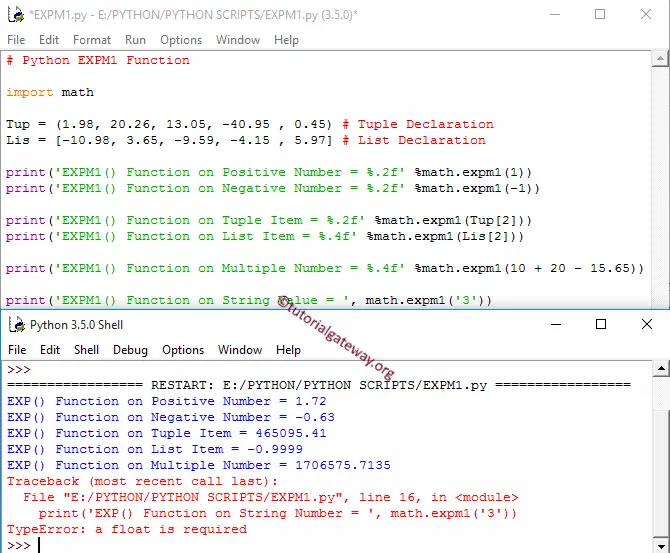The Python expm1 math function is to calculate the power of E (Where E is Euler’s number approximately equal to 2.71828) and subtracts One from it. In this section, we discuss how to use Python expm1 function with an example.
The syntax of the Python expm1 Function is
math.expm1(number);
Or we can simply say math.exp(number) – 1. Please refer to the exp function for further reference.
Number: It can be a number or a valid numerical expression.
- If the number argument is a positive or negative number, it returns the output.
- If the number argument is not a number, the function return TypeError.
Python expm1 Function Example
The expm1 Function calculates the power of Euler’s number E and subtracts One from it. In this example, we use this one to find the power of e of different data types.
import math
Tup = (1.98, 20.26, 13.05, -40.95 , 0.45) # Tuple Declaration
Lis = [-10.98, 3.65, -9.59, -4.15 , 5.97] # List Declaration
print('EXPM1() Function on Positive Number = %.2f' %math.expm1(1))
print('EXPM1() Function on Negative Number = %.2f' %math.expm1(-1))
print('EXPM1() Function on Tuple Item = %.2f' %math.expm1(Tup[2]))
print('EXPM1() Function on List Item = %.4f' %math.expm1(Lis[2]))
print('EXPM1() Function on Multiple Number = %.4f' %math.expm1(10 + 20 - 15.65))
print('EXPM1() Function on String Value = ', math.expm1('3'))

In the last statement, We used it on the String value. And as we said before, it returns TypeError as output. Please refer to Tuple, List, and Math functions in Python.
